| Quench | ||
The term commonly used in sealing engineering for an arrangement that applies a pressureless external medium (fluid, vapour, gas) to a mechanical seal's faces on the atmosphere side. A quench is used on the one hand when a single mechanical seal does not function at all or only within certain limits without auxiliary measures, and on the other hand when a double mechanical seal with pressurized buffer medium is unnecessary. The quench performs at least one of the duties described below; the numbers in brackets refer to the types of installation suitable for the given duty (the recommended installation is cited first), which are detailed in the following section. Fluid quench
|
Vapour quench (3)
Gas quench (3)
Depending on the given duty, the quenching medium seal takes one of the following forms:
|
|
| Quench installation in accordance with DIN ISO 5199 or API
610: 1. Dead-end quench Frequently this consists of a transparent, ventilated reservoir positioned directly above the seal casing. With a vertical shaft, the space above the mechanical seal performs the function of the quench reservoir (cf. submersible motor pump). Quenching medium – preferably oil; API 610 recommends methanol. |
||
| DIN ISO 5199 | API 610 | |
| No. 08 Injection of external fluid … for quenching | Plan 51 Dead-ended blanket typically used with auxiliary sealing device | |
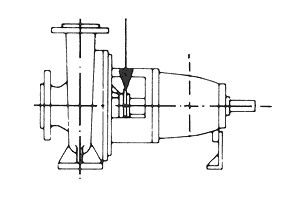 |
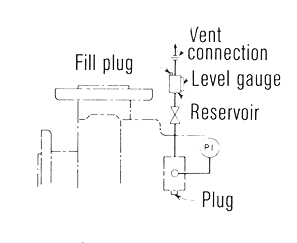 |
|
| No. 13 .. quenching fluid from an elevated reservoir |
||
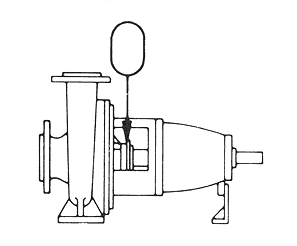 |
||
2. Circulation Circulation of quenching medium via a pressureless reservoir. Quenching medium – any suitable fluid. |
||
| DIN ISO 5199 | API 610 | |
No. 10 ... quenching fluid from an elevated reservoir; circulation of fluid by thermosyphon effect or by a pump system. |
Plan 54 Circulation of clear fluid from externa system |
|
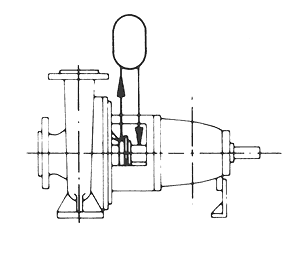 |
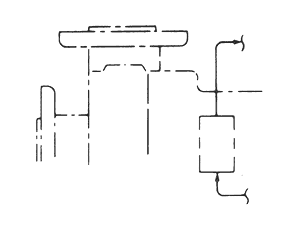 |
|
| Plan 52 Nonpressunzen external fluid
reservoir with forced circulation
|
||
3. Throughflow The quenching medium flows through. Quenching medium – fluid, vapour, gas. |
||
| DIN ISO 5199 | API 610 | |
| No. 09 External fluid ... for quenching. Discharge into an exter nal system | Plan 62 External fluid quench (vapour, gas, water etc.) | |
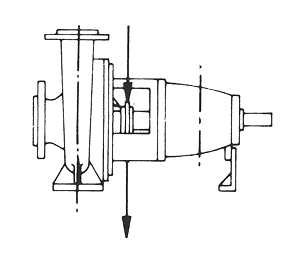 |
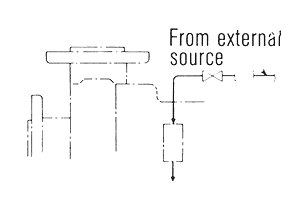 |
|
Examples for quenching media seals
|
||